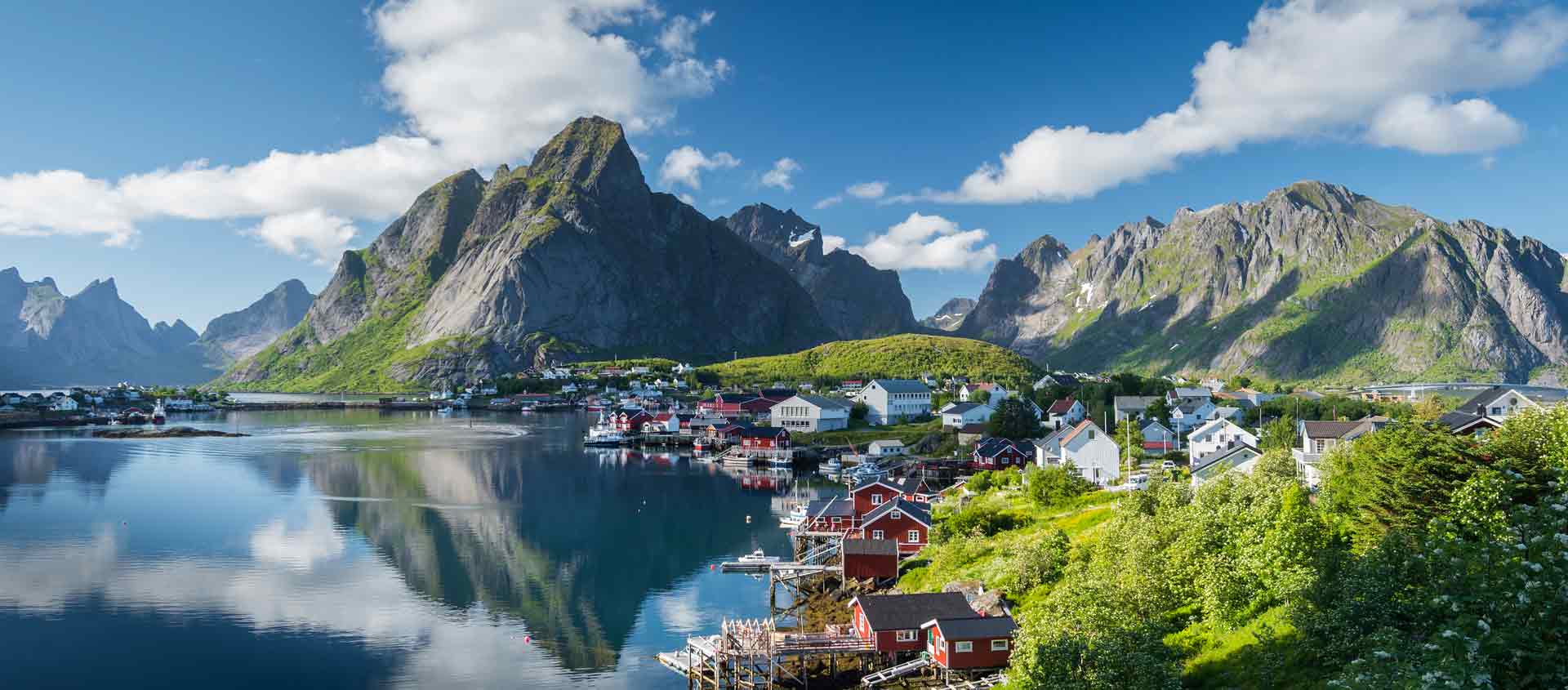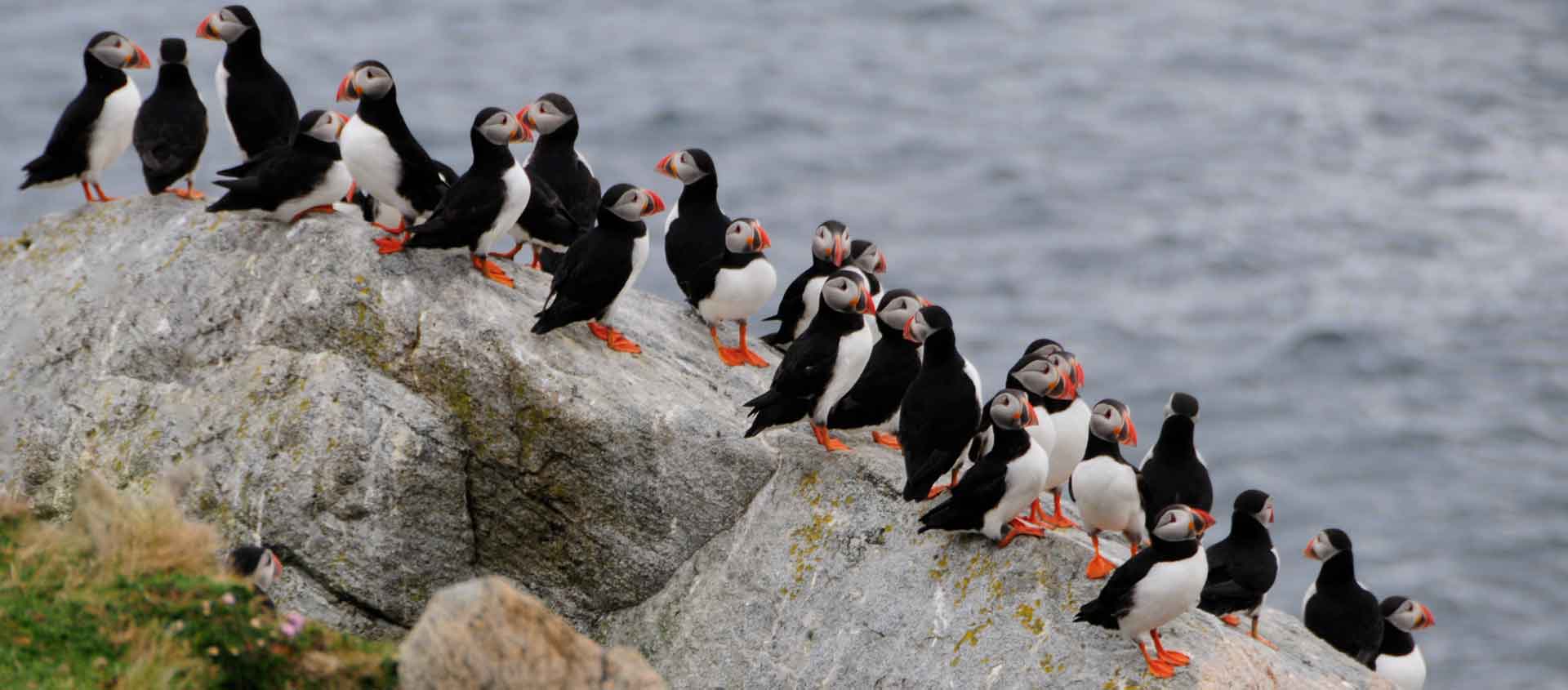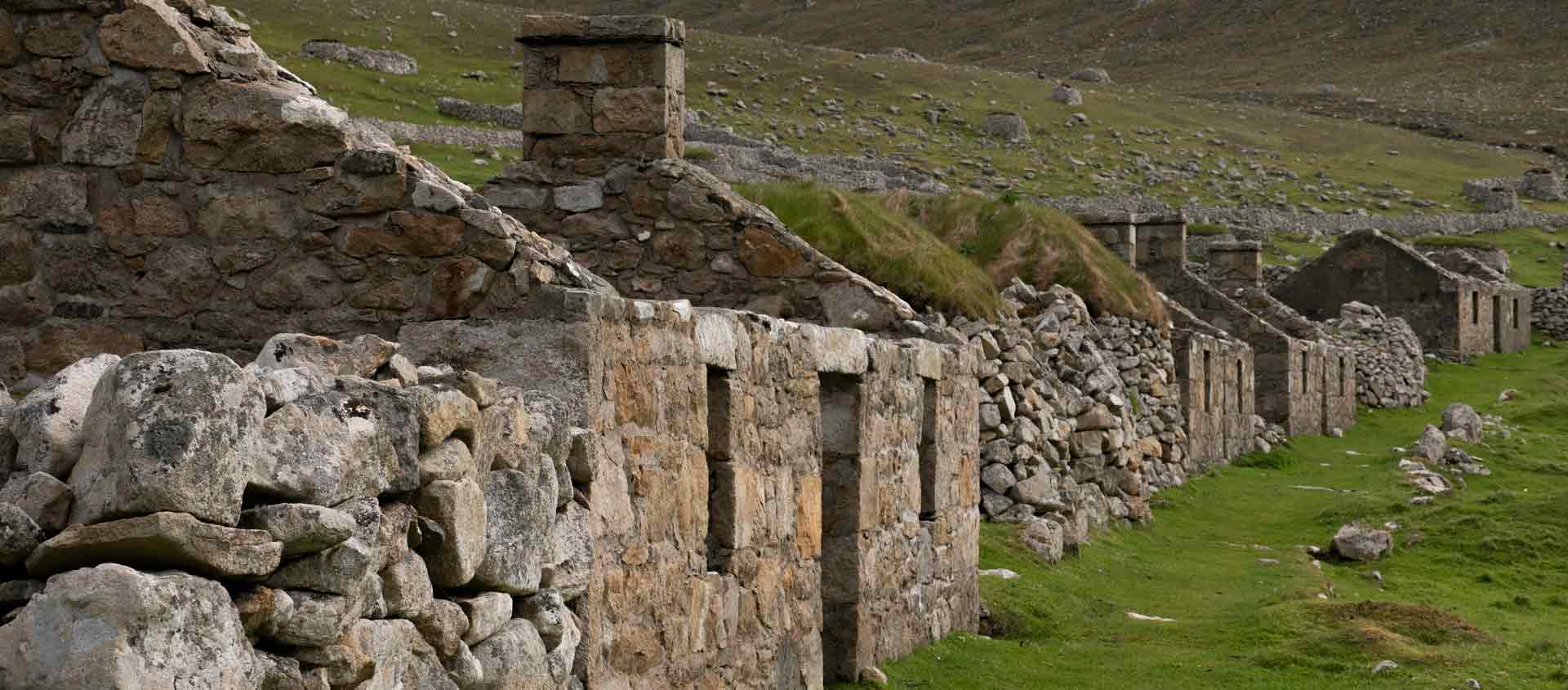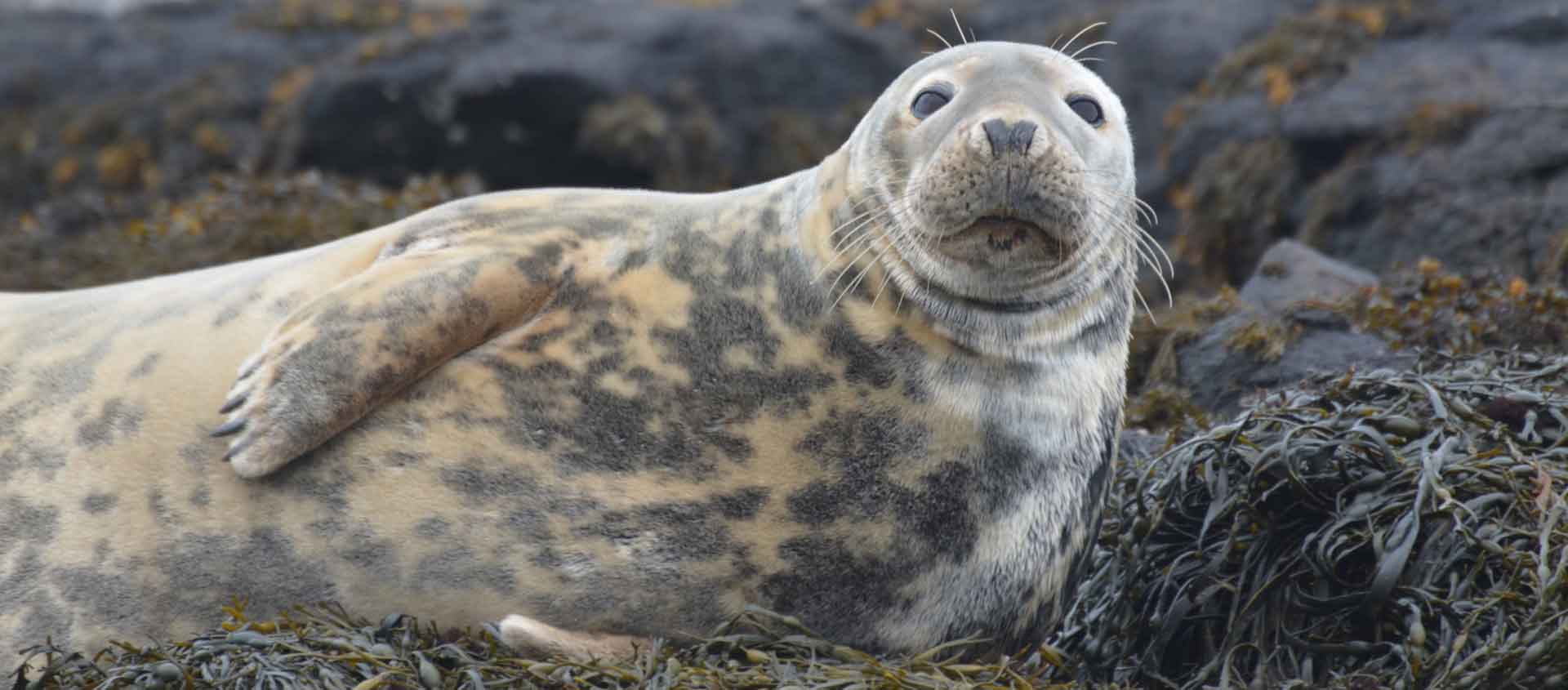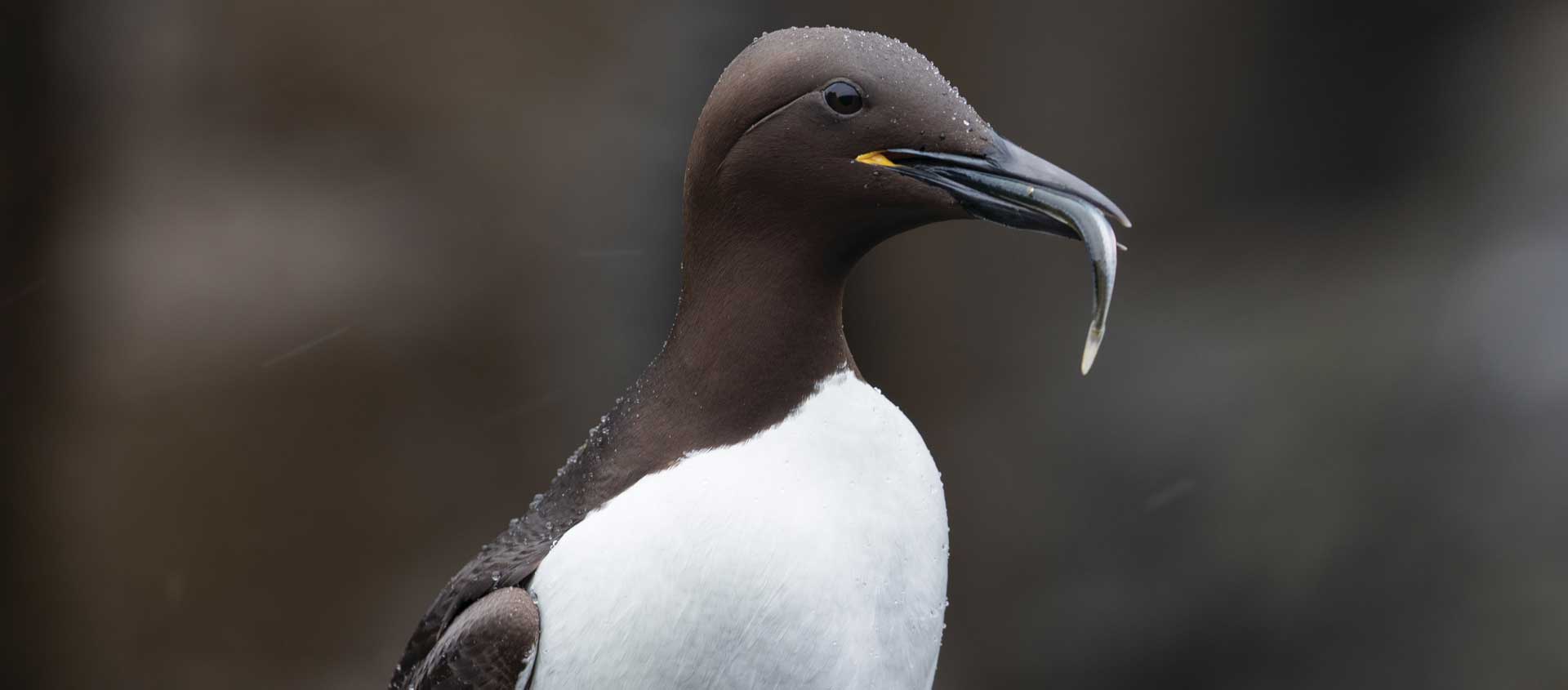Wild Britain & Norway
onboard Silver Cloud
Cruise the British Isles and Norway
“Wild” is not how most would describe Britain, which prides itself on being thoroughly civilized. Yet, a wild edge remains in the country’s far-flung islands, strewn with rugged sea stacks and natural archways, Iron Age towers, and ancient stone storehouses. The islands take on a more Norse flair the further north you go, until they mesh seamlessly with Norway. Join Apex to cruise the British Isles and Norway, exploring ancient and timeless lands steeped in the lore and history of the Celts, Anglo-Saxons, and Vikings. This expedition puts you in the midst of heathered moorlands, ancient forests, British countryside ablaze with wildflowers, Neolithic monuments, stone abbeys, and Celtic fortresses. Just offshore, on isolated islands, lie Europe’s largest seabird colonies—resonating with the caws and cries of puffins, guillemots, kittiwakes, and gannets, along with many migratory bird species—all in a frenzy of breeding activity. Cross the Arctic Circle, cruise impossibly deep fjords, and revel in the long northern summer days as you explore this truly wild corner of the northeast Atlantic Ocean.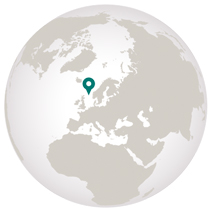
Destinations
- Travel by Air
- Travel by Road
- Travel by Boat
- Travel by Bullet Train
- Travel by Rail
- Travel by Dog Sled
-
Tuesday, May 31: Arrive London, England
Arrive at London’s Heathrow Airport and transfer to your hotel. Explore the city at your leisure before meeting your fellow travelers and team of Apex naturalists for a welcome dinner and briefing. Dinner and overnight at Conrad London St. James.
-
Wednesday, June 1: London / Southampton / Embark Silver Cloud
After breakfast, head southwest to the port city of Southampton with its long maritime history: Henry V’s fleet bound for the battle of Agincourt left from here, as did the Mayflower; and the great British ocean liners Queen Elizabeth 2 and Queen Maryboth departed on their maiden voyages from this port. Southampton is now the cruise capital of Northern Europe, and it is where you will embark your seafaring home for the next 13 nights, the Silver Cloud. Board the ship in time for lunch, settle into your suite and be sure to be on deck as you set sail from the harbor.
-
Thursday, June 2: Tresco & Bryher, Isles of Scilly
The Scilly Archipelago lies just 30 miles off Cornwall but feels radically different from the rest of Britain. Its pace of life is slower, its weather milder, and it retains a stunning wildness. As the ship approaches the 140 granitic islets that comprise the Isles of Scilly, look out for dolphins, seabirds and even Basking Sharks. This morning, come ashore at Tresco to visit the Bronze Age burial sites and 17th-century castle ruins at Tresco Abbey. Spend time in its exquisite subtropical gardens, which boast over 20,000 exotic plants.
Return to the ship for lunch, then visit Bryher, the smallest of the inhabited Scilly Isles. Enjoy a hike along the eastern coastline with views of St. Mary’s Island and the quaint main township of Hugh Town. Watch for birds and beautiful carpets of flowering pink Sea Thrift.
-
Friday, June 3: Port St. Mary, Isle of Man
Perched in the Irish Sea, right in the middle of the UK, the Isle of Man is actually its own nation, self-governing, with a distinct Gaelic and Norse heritage. Here, the people, language, cats and sheep are known as Manx. Come ashore at historic Port St. Mary and choose from several activities. Walk the Mull Peninsula, passing picturesque Manx hamlets, to Port Erin, then on to Bradda Head for panoramic views. Or head to Cregneash, a “living museum” of a hamlet, whose whitewashed cottages give one a sense of 19th-century Manx life. Some may choose to take the island’s vintage steam train to the magnificent 13th-century Castle Rushen, home to the last Norse King of Man. Still others may spend the day kayaking or birding at the Calf of Man. Located amidst spectacular scenery half a mile off the southern tip of the Isle of Man, the Calf of Man is a small island of approximately 600 acres. Now in the care of Manx National Heritage, the Calf provides the ideal destination for birdwatchers: it is home to a number of seabird colonies and thousands of migrating birds en route. Around 33 species of seabirds breed on the islet annually, including Manx Shearwater, Black-legged Kittiwake, Razorbill and European Shag. Other species normally observed on the island include Peregrine Falcon, Hen Harrier and Red-billed Chough.
-
Saturday, June 4: Inner Hebrides, Iona & Lunga, Scotland
Iona, holy island and burial ground of kings, is a small isle in the Inner Hebrides. This morning, visit iconic Iona Abbey, built in 563 by the Christian missionary St. Columba to spread Christianity throughout Scotland. Despite numerous Viking attacks, it was always rebuilt, and its 12th-century incarnation is here to this day. Its cemetery allegedly contains the remains of 48 Scottish kings, including Duncan, Macbeth’s victim.
After lunch, visit Lunga, the largest island in the incredibly remote Treshnish archipelago. Lunga was populated until the 19thcentury, and vestiges of blackhouses remain everywhere. Explore Lunga’s rocky shores by Zodiac to see the Atlantic Puffins and shags that have made this their home. Make a landing and climb over the rocks to get a closer look. Kayakers can also explore the waters around the island.
-
Sunday, June 5: Isles of Skye & Canna
Near the southern end of the Isle of Skye lies Loch Skavaig, more of a bay than a traditional lake. Here, Harbor and Gray Seals bask on foreshore rocks and heather moorlands grow up the slopes of the Cuillin Mountains. Just inland from Skavaig lies Loch Coruisk, a freshwater loch surrounded by the jagged peaks of the Black Cuillin. This morning, hike around Loch Coruisk and take in its haunting landscape—long the subject of legends and folklore.
This afternoon, head to Canna, southwest of Skye. Thought to be inhabited since 5000 BC, the island now supports a small crofting community. Take a guided walk to explore this isolated community. Stroll past the island’s two tiny churches, then head through woodland carpeted with bluebells and see Canna House, home to the archives of Gaelic scholar John Campbell, who left the island and his collections to the National Trust for Scotland.
-
Monday, June 6: Outer Hebrides
The Outer Hebrides is a dramatically rugged island chain, the most isolated of which is St Kilda. This storm-ravaged island was continuously inhabited for at least two millennia by people of extraordinary hardiness. But as the modern world closed in after World War I, the remaining inhabitants chose to leave. This morning, hike around the remains of their rough stone buildings and distinctive storehouses called cleitean. See colonies of puffins, murres, fulmars and kittiwakes. Look for the extremely rare St. Kilda Wren, as well as Soay, descended from feral sheep—one of the oldest and smallest breed of sheep in the world today.
This afternoon, navigate the waters around Boreray, also in the St. Kilda Group, to see the world’s largest colony of Northern Gannets, as well as Atlantic Puffins. Despite being one of the most far-flung and weather-impacted islands in the Northeast Atlantic, it was inhabited as far back as Neolithic times, and rare, and now wild, Boreray Sheep may be spotted as reminders of its former inhabitants.
-
Tuesday, June 7: Shetland Islands – Papa Stour & Foula
Arrive in the most northerly point of the British Isles, the craggy Shetland Islands, sprawling across 100 islands, and spanning 5,000 years of human heritage. This morning, explore the shores of spectacular Papa Stour by Zodiac. The erosion of the island’s soft volcanic rocks by the sea has created an extraordinary variety of caves, stacks, arches, blowholes and cliffs. Perched among these natural wonders, you’ll find Atlantic Puffins, Arctic Terns, Ringed Plovers and Great Black-backed Gulls.
After lunch, visit Foula, located 20 miles west of the main Shetland Islands and oft-described as the most remote inhabited island of the UK. Foula means “Bird Island” in old Norse, and the moniker is apt: Britain’s largest population of Great Skuas nest here, as do Red-throated Divers and Arctic Terns.
-
Wednesday, June 8: Shetland Islands – Lerwick & Noss
Arrive at Shetland’s largest island, known as “the Mainland,” home to adorable ponies, breathtaking Iron Age “brochs” and magnificently preserved Neolithic settlements. Here, choose from several options: head south from Lerwick, the capital, to see Jarlshof, an extraordinary archaeological site where various periods of occupation from 2500 BC to AD 1500 can be seen, with Viking longhouses standing alongside the brochs of preceding eras. From Jarlshof, drive or hike to the Sumburgh Head lighthouse to enjoy close encounters with puffins. Or drive north from Lerwick to visit the local museum at Tangwick Haa, and the historic Eshaness lighthouse to see sea stacks peppered with agates and amethysts. You may visit the nearby island of Mousa, an uninhabited sanctuary filled with birds, and the impressive Iron Age relic, Mousa Broch. Or take a ferry to Bressay and hike around the quiet island. If you prefer to stay in town, learn of the colorful history of Lerwick on a walking tour.
After lunch, travel by Zodiac along the Isle of Noss, where the weather has notched ledges into towering sandstone cliffs, making perfect nesting sites for some 150,000 seabirds. You may also choose to kayak along these bird cliffs, peering up at thousands of gannets nesting above.
-
Thursday, June 9: Runde, Norway
Wake up this morning in Norway, just across the North Sea from the Shetlands. Orkney Runde is an island located some 15 miles west of the mainland. Runde is known for its impressive cliffs, bustling this time of year with several hundred thousand nesting birds. Traverse the coast by Zodiac and scout for Atlantic Puffins, White-tailed Sea-eagles, Great Skuas and gannets. You may also choose to kayak along Runde’s shoreline.
-
Friday, June 10: At Sea
Spend the day at sea as the Silver Cloud travels up the west coast of Norway. Attend lectures on the flora, fauna and history of the upcoming Lofoten Islands. Join the expedition team on deck to look for seabirds, porpoises and Orcas.
-
Saturday, June 11: Lofoten Islands
The approach to the Lofoten Islands is impressive: craggy mountains pierce the sky like a spiky sea monster. This morning, navigate around Værøy. See carpets of wildflowers, and the best seabird breeding area of mainland Europe—Northern Fulmars, Common and Black Guillemots, Razorbills, European Shags, Black-legged Kittiwakes and terns nest here. Watch for White-tailed Sea-eagles overhead. Skilled hunters used to catch them by hand! Conditions permitting, go ashore for a short walk.
After lunch, arrive at Reine. Hike along the verdant west coast to Haukland, Norway’s most famous beach. Or visit Sund’s Fishery Museum, as well as the towns of Flakstad and Vikten, seeing an old Russian-style church, and Northern Norway’s premiere glassblowing studio. Lovers of Norse history may choose instead to visit the Viking Museum in Borg, with a full re-creation of a Viking village. Eat soup made from an old Norse recipe, and try your hand at archery and axe throwing.
This evening, visit Leknes, further up the archipelago. Stroll the charming streets, lined with pretty red houses, surrounded by emerald hills.
-
Sunday, June 12: Cruise Trollfjorden / Narvik
In 1890, Trollfjorden was the scene of an epic battle between traditional open-boat fishermen and the first steam-powered fishing ships. Its scenery is as dramatic as its history, with 3,500-foot sheer cliffs plunging down to the water. Cruise the fjord this morning, looking for White-tailed Sea-eagles and the elusive European Otter.
Spend the rest of the day in spectacularly-located Narvik, on the mainland. You may choose to stay in the city and take a walking tour, seeing the Swedish Sailors Church, Town Hall and Narvik Cathedral. At the War Museum, learn about the bitter battle for Narvik, the first major victory by the Allies during World War II. Or hike up Fagernes Mountain for amazing views. For those wishing to go further afield, head to the Tøtte Valley for a spectacular hike through forests and lakes, or take a scenic 90-minute train ride to Björkliden, on the Swedish border.
-
Monday, June 13: Harstad / Sunddsvollsundet
This morning, visit Harstad on the large island of Hinnøya. Visit the Adolf Cannon, one of the largest battleship cannons put on land in Europe during World War II, then head to Harstad Brewery for a tour and tasting of their array of beers. Alternately, you may opt for a choice of hikes on surrounding mountains. Or, take a drive to the Trondenes Peninsula to see the world’s northernmost Medieval stone church and Trondenes Historical Center, replete with reenactments of life in a household circa 1200. Or, visit the local farm Røkenes and learn its fascinating history—the same family has owned it since 1673. Lastly, you may choose to see Hinnøya by helicopter (at additional cost), gazing over the world’s northernmost inhabited archipelago from on high.
This afternoon, voyage north to Helløya Island to see the bird cliffs at Sundsvollsundet Nature Reserve. Scan the cliff ledges for nesting Black-legged Kittiwakes, or “Crutches,” as they’re known in Norwegian.
-
Tuesday, June 14: Tromsø
Located 250 miles north of the Arctic Circle, the small city of Tromsø is Norway’s gateway to the Arctic, and there’s certainly a polar atmosphere around here. This morning, disembark the Silver Cloud and transfer to the airport for your flights homeward.

